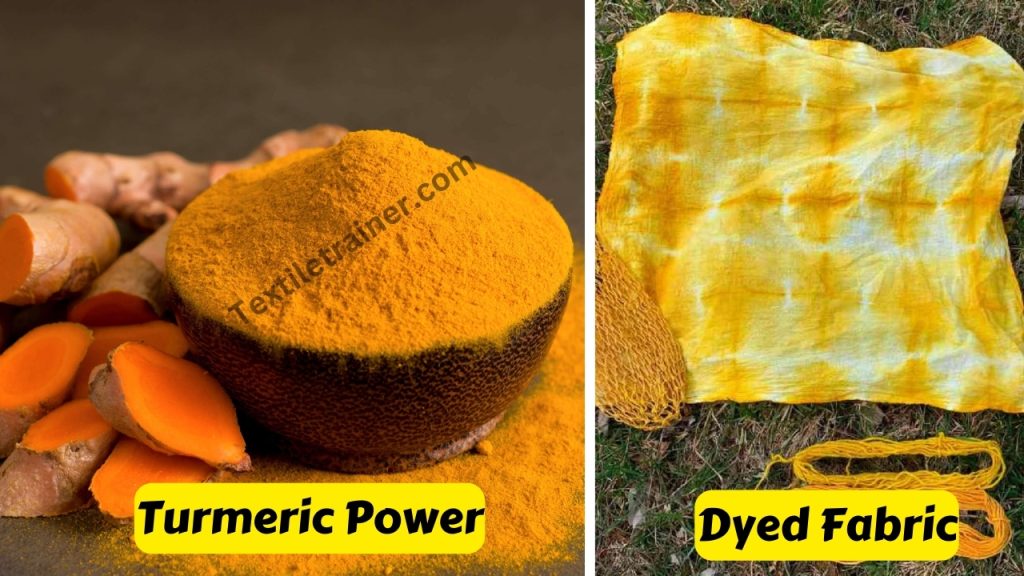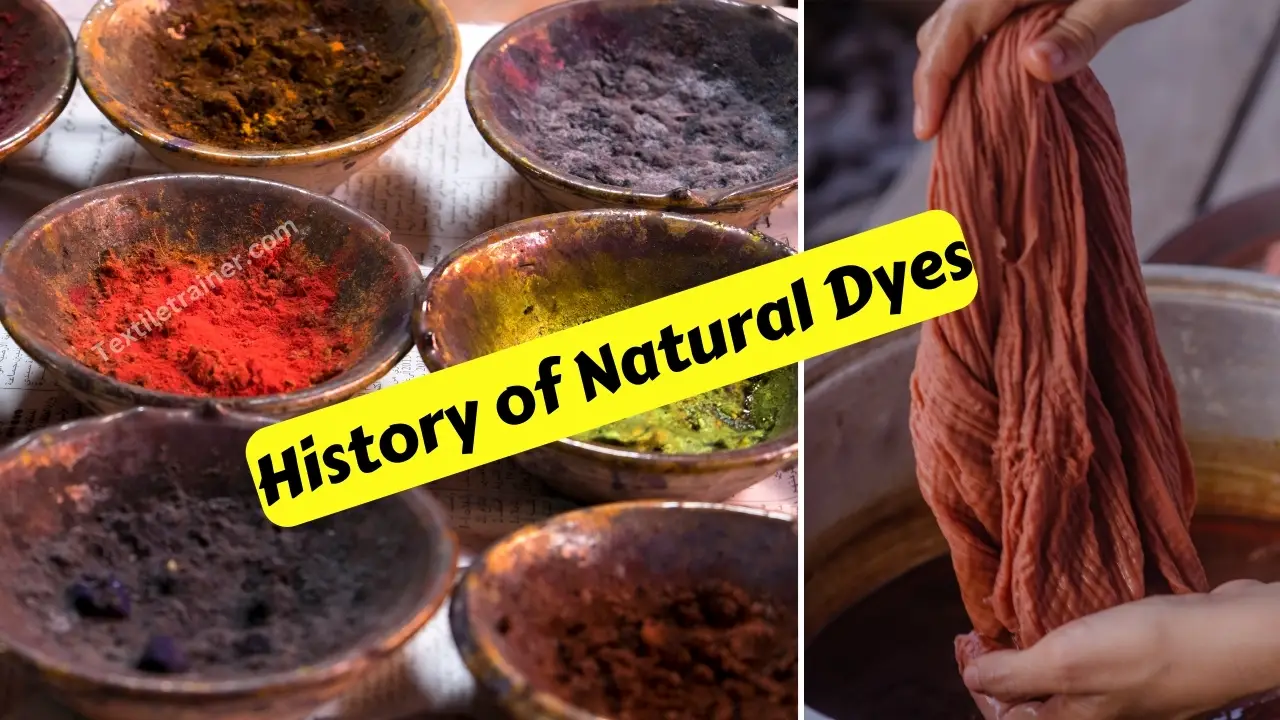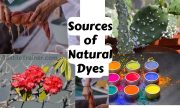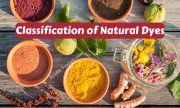What is Natural Dyes?
In nature, we find many resources that contain beautiful colors. Researchers are now focusing on natural dyes as one of their most important research areas. In this article, we will brief history of natural dyes. Natural dyes are dyes made from plant leaves, roots, bark, insect secretions, and minerals. Food substrates, leather, wool, silk, and cotton have been colored with natural dyes since prehistoric times. Due to increased environmental awareness, the use of non-allergic, non-toxic and eco-friendly natural dyes on textiles has become of vital importance in order to avoid some hazardous synthetic dyes.

History of Natural Dyes:
In antiquity, early humans did not use much colorant, but they created prehistorical multicolored rock art to demonstrate the use of pigment by primitive humans for aesthetic pleasure and to convey some symbolic and religious ideas. Several pieces of cloth with red traces were found in the Neolithic period of the Bronze Age. Which were dyed with red ochre (iron oxide from clay). According to evidence found at the archaeological site. Early in the 1st dynasty, Egyptian mummies were wrapped in red dyed linen dyed with madder derived from the roots of the Rubia tinctorum plant. From the 5th dynasty, red and blue fringes and pinstripes woven into white linen borders were found. A yellow linen dye made from Carthamus tinctorius has been used to dye mummies since the 12th dynasty. By 1500 B.C., henna (Lawsonia sp.) was used to dye red cloth. In addition to blue dyed linen, Egyptians used orange, yellow, black, and brown pigments derived from ochre when wrapping their mummies.
In Historical times, some sea Mollusca were used for the production of purple dye. In particular, shells and snails produced purple dye belong to the genus Purpura, Murex, Nucella, and Thais in the family Muricidae. In shells and snails, the Hypobranchial gland (dye sac) is responsible for producing dyes. On exposure to air and light, the secreted substance from the hypobranchial gland was initially yellowish white (called leuco-base), but turned purple after oxidation. In ancient times, eastern Mediterranean countries – now known as Crete, Lebanon, and Israel – produced purple dye from Murex trunculus, Murex brandaris, and Purpura haemastoma. This dye was also known as Tyrian purple or Royal purple. In the middle ages of west coast of France , Nucella lapillus was used as a source of purple dye. Around 1500 B.C., Murex sps. Shells were used for purple dye production at the Akotiri Excavator. As early as 1600 B.C., the murex shells were also used to produce purple dye. For textile dyeing, purple shells were used on the north coast of Syria from the 13th to the 15th centuries B.C. In the middle Bronze Age, the Canaanites of Palestine made purple dyed cloths from Murex sp. The art of producing purple dye spread from Mediterranean to West Africa and Ireland, followed by Greeks, Egyptians and novels. Mollusca were used as purple dyes on the Pacific Coast of America since pre-Cambrian times. At the end of the 1st millennium, there was a purple industry in the Levant for making Tyrian purple and Phoenician red, but each animal produced only a single drop of dye. In order to produce large quantities of dye, more snails and shells were needed, so Phoenicians established snail colonies all over the Mediterranean and along the Atlantic coast of Africa and Spain. During antiquity, Tyrian purple symbolized power, wealth, and royalty.
It was found in Neolithic caves that red kermes dye was obtained from unlaid eggs of the insect Kermes vermilio, a member of the Kermesidae family. From the late Neolithic period, fabrics in western Europe were dyed red with this dye. For fabric dyeing, red kermes dye was used by the Egyptians, the Acadians, and the late Sumerians .
In addition to cochineal dye, other red colored dyes have been used at Ararat’s foot for millennia. Dactylopius coccus, a scale insect in the family Dactylopiidae from Mexico, produces cochineal dye. This scale insect lives on the cacti and roots of some local grasses in north Europe. The dye contains carminic acid.
In Persia and Armenia, wool fabrics were dyed purple by minerals as early as 1600 B.C. Indigo dye was used by India and Egypt before Christ era. In Egypt, indigo dye has been used since the 5th dynasty. Indicum’, which means this plant originated in India, is the Latin word for indigo. Historically, indigo colored dye was produced in Europe by using the leaves of Isatis tinctoria (wood plant) and in India by using Indigofera tinctoria leaves.
It has been documented that flax fibers dyed with natural dyes were present in the Dzudzuana cave of Georgia dating back to 30,000 years ago. Previous dyes, including mad, indigo, wood, cochineal, kermes, and tyrian purple, were used to dye fibers in ancient times.
Reference:
- E. J. W. Barber, Prehistoric textiles: the development of cloth in the Neolithic and Bronze Ages with special reference to the Aegean, Princeton University Press, 1991
- F. Brunello, The art of dyeing in the history of mankind, Aatcc, 1973
- C. J. Cooksey, ―Tyrian purple from marine muricids, especially from Plicopurpura pansa (Gould, 1853),‖ Journal of Shellfish Research, vol. 21(1), pp.193-200, 2002
- T. Bechtold and R. Mussak (Eds.) Handbook of natural colorants. John Wiley & Sons, 2009
- M. LaBerge, ―The Heart of the Madder: An Important Prehistoric Pigment and Its Botanical and Cultural Roots,‖ M. Sci. thesis, University of Wisconsin-Milwaukee, 2018.
- (Parekh & Solanki, 2023)Parekh, S. G., & Solanki, H. A. (2023). NATURAL TEXTILE DYEING : a REVIEW. July.






